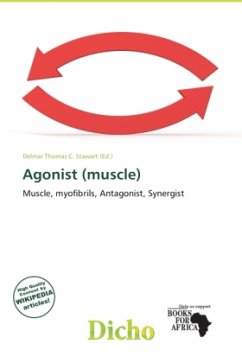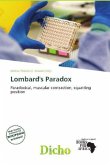Please note that the content of this book primarily consists of articles available from Wikipedia or other free sources online. Agonist is a classification used to describe a muscle that causes specific movement or possibly several movements to occur through the process of its own contraction. This is typically a term designated for skeletal muscles. Agonists are also referred to, interchangeably, as "prime movers" since they are the muscles being considered that are primarily responsible for generating a specific movement.For an agonist to be effective as a mover in the skeletal system it must actually cross one or more structure(s) that can move. This is typically where the muscle crosses a joint by way of a connecting tendon. As the myofibrils of a muscle are excited into action and then contract, they will create tension and pull through the tendon and pulling the lever arm of bone on the opposite side of the joint closer to the muscles origin.
Bitte wählen Sie Ihr Anliegen aus.
Rechnungen
Retourenschein anfordern
Bestellstatus
Storno








